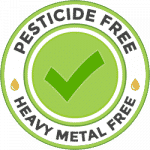As one of the oldest cultivated crops in the world, hemp offers a wealth of benefits to farmers and entrepreneurs alike. This comprehensive guide aims to cover all stages of growing hemp, from choosing the right seeds to the final stages of harvest.
Choosing the Right Seeds
Before you begin planting, selecting the right hemp seeds is critical for your farm’s success. It’s important to understand that the ideal type of seed largely depends on the end-use of your crop:
- Fiber hemp seeds: Ideal for textile production.
- Seed hemp seeds: Preferred for hemp oil and food products.
- CBD hemp seeds: High in CBD, low in THC; ideal for medicinal and therapeutic use.
Also, consider these factors when choosing your seeds:
- Climate adaptability: Some varieties perform better in certain climates.
- Disease resistance: Consider the susceptibility of the seed variety to common pests and diseases in your region.
Cultivation and Planting
Next, let’s discuss the actual planting of your chosen hemp seeds. This process may vary depending on the type of hemp you’re growing and the specifics of your region.
- Soil Conditions: Hemp plants prefer well-drained soil with a pH between 6-7.5. The soil should be rich in organic matter.
- Planting: Hemp seeds should be planted after the last frost when soil temperatures reach around 50°F (10°C). Seed spacing varies depending on the type of hemp grown, with fiber varieties planted closely and grain/CBD varieties given more space.
- Watering: Hemp requires consistent moisture, especially during the initial growth phase. However, it’s also important to prevent water-logging.
Pests and Disease Control
Even though hemp is relatively hardy, it’s not immune to pests and diseases. Here are some common threats and organic measures you can take to protect your crops:
- Pests: Hemp borer, European corn borer, aphids, etc.
- Diseases: White mold, gray mold, hemp canker, etc.
- Control Measures: Use of organic pesticides, regular crop inspection, and employing practices such as crop rotation and field sanitation.
Harvesting and Processing
Understanding when and how to harvest your hemp crop can dramatically impact the quality of your final product.
- Fiber Hemp: Harvested earlier than grain and CBD hemp, as soon as the first seeds appear.
- Grain Hemp: Harvested when seeds are fully developed and start to shatter.
- CBD Hemp: Harvested when the CBD content is at its peak, typically when flowers are fully developed.
After harvest, processing varies greatly depending on the type of hemp grown, with fiber hemp requiring retting and decortication, grain hemp needing cleaning and drying, and CBD hemp undergoing drying and extraction.
Common Mistakes and How to Avoid Them
Growing hemp can come with its own set of challenges. Here are a few common mistakes that you can avoid:
- Poor Seed Selection: Ensure you source high-quality seeds from reputable suppliers.
- Inadequate Soil Preparation: Soil should be well-prepared and tested for pH and nutrient levels.
- Ignoring Pests and Diseases: Regular inspections and preventive measures are key to a healthy crop.
Conclusion
With the right knowledge and resources, growing hemp can be a rewarding endeavor. We hope this comprehensive guide serves as a useful starting point for those interested in entering the hemp industry.
